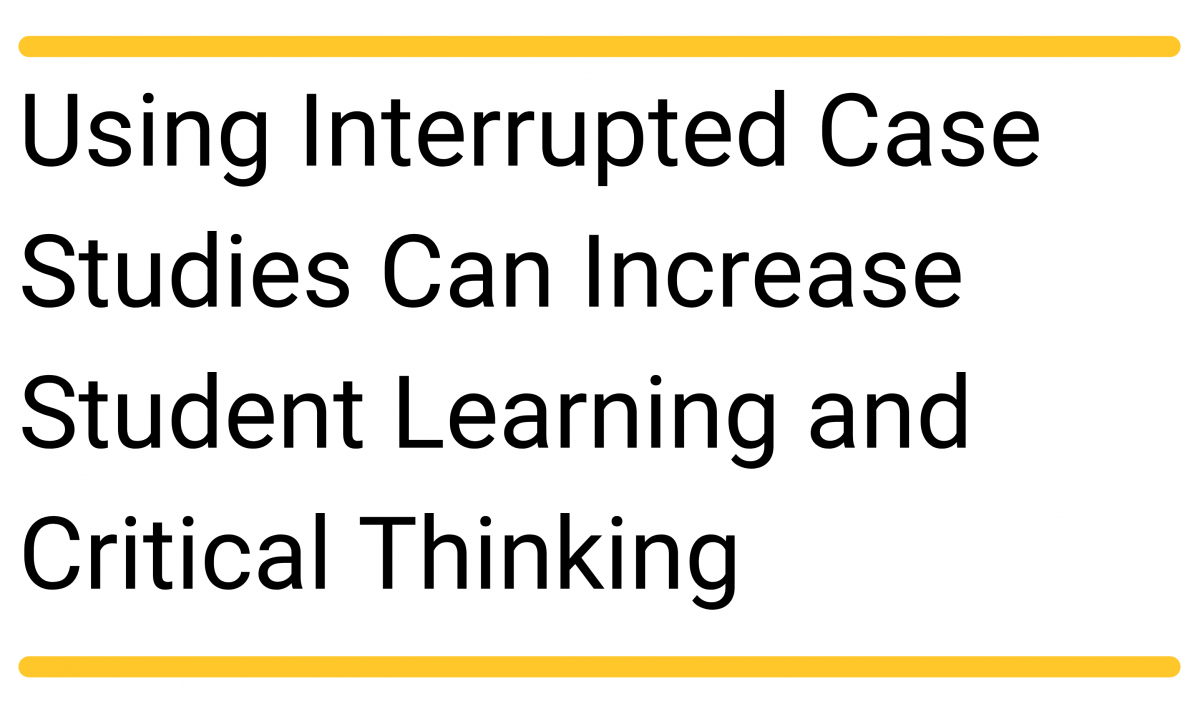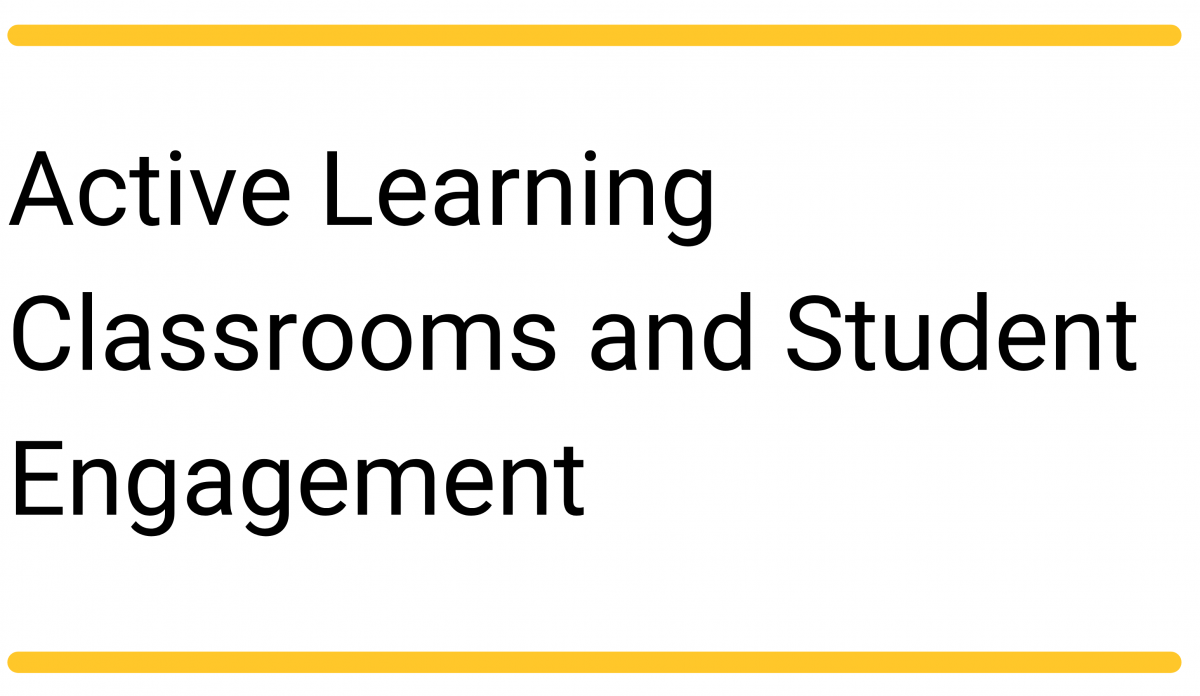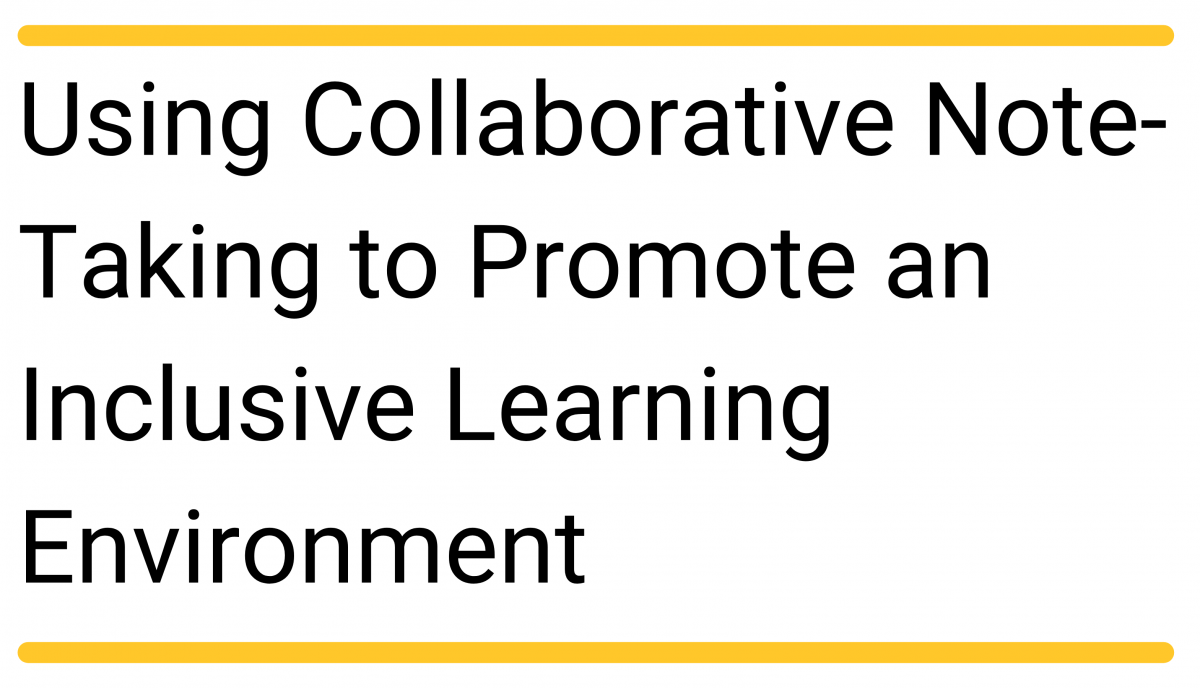SoTL Snapshots: Evidence-Based Teaching Strategies

Evidence-Based Teaching Strategies Return to Snapshot Homepage
These Snapshots describe research-based teaching strategies on topics including deep learning, critical thinking, active learning, and student motivation.
Research shows that case studies can help students learn how to apply theories and generate practical solutions to problems...
Anecdotal evidence suggests that in-class mindfulness exercises may enhance student learning. In this study, a researcher and...
The assessments used in a course influence the way students learn and engage with class content. Certain assessments require...
Active learning classrooms (ALCs) typically include round or curved tables, moveable seats, and large screen displays that students...
Many students use laptops to independently take notes which can lead to low class engagement and unhelpful or inaccurate notes...
Intercultural competence refers to the ability to communicate effectively and appropriately in intercultural situations. Intercultural...
Online tutorials can present challenges for students and instructors including keeping students engaged and presenting...
Although drawing is used as a teaching technique in the visual arts and some science disciplines, drawing is used less often in....
In a ‘flipped classroom’ model, students read or view materials before class, work on practical problems in class, and check their...
In typical flipped classes, class time is used for what would traditionally be homework, and time out of class is used for what would...
Cognitive psychologists agree that cramming, highlighting, and rereading are not effective study strategies, especially for long-term...
Researchers have examined factors that affect student motivation in the university environment. Lack of motivation can lead...
Creating an active learning environment is important for educators in order to engage students during class time. The flipped...
Cooperative learning involves students working together to achieve a learning goal. Research suggests...
Research shows that students can increase their ability to retain information by studying the same information on more than one...
Game-based learning is a form of active learning that involves engaging students in gameplay related to defined learning outcomes.
Accrediting bodies of medical schools now recognize that ethics instruction is an integral part of medical education......
Social connection plays an important role in the promotion of student well-being and academic success....
The book chapter 'Inclusive Pedagogy and Universal Design Approaches for Diverse Learning Environments'...
Research indicates that drawing and three-dimensional (3D) modeling are two simple and cost-effective learning...
Spaced Learning highlighted the importance of intervals between brain cell stimulations rather than constant...
Previous sport management research has found that about 42% of students prefer kinesthetic learning...
When courses shifted to virtual classrooms during the COVID-19 pandemic, effective teaching methods became crucial...
Existing knowledge systems are diverse. They include indigenous worldviews and the Western knowledge...
In recent years, active learning methodology has gained traction among instructors. However, students often have...
This research presents a comprehensive review of the flipped classroom model, highlighting its advantages and challenges in...
The question-behaviour effect (QBE) refers to the phenomenon in which asking an individual certain questions about their perceived...
Effective course design considers how students experience and perceive their assignments. The impact of assignments can vary based...
Instructors can choose to use several different types of questions on exams, some more open-ended than others (e.g., true-false...
The study discusses the usefulness of IDPs as tools for helping students’ professional development across disciplines. IDPs are sometimes...
Cross-disciplinary collaborations are essential in engineering education, as they integrate perspectives from engineering and social...
Group work is often utilized within classrooms to encourage student discussion and collaboration. This group work...




















































